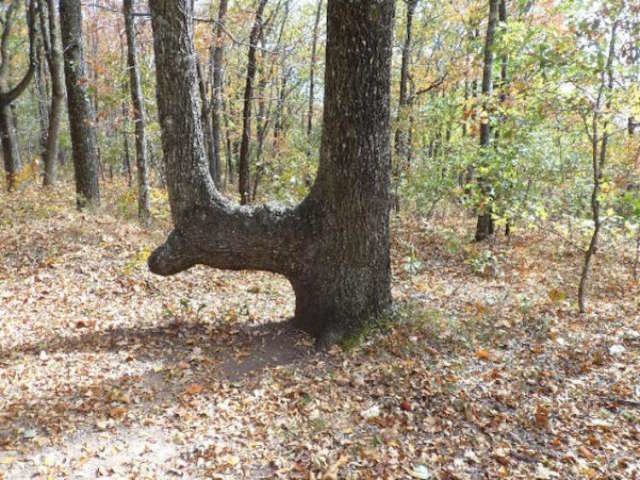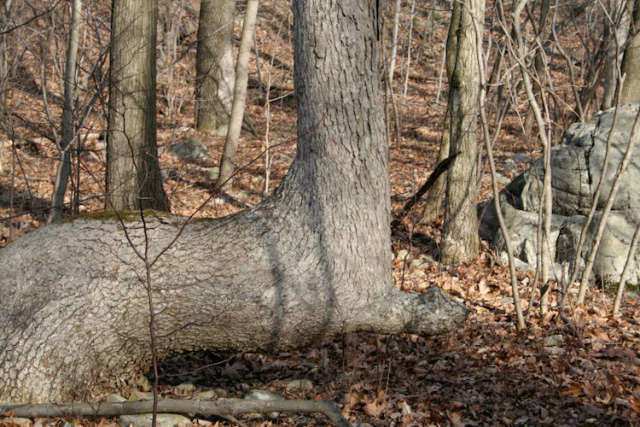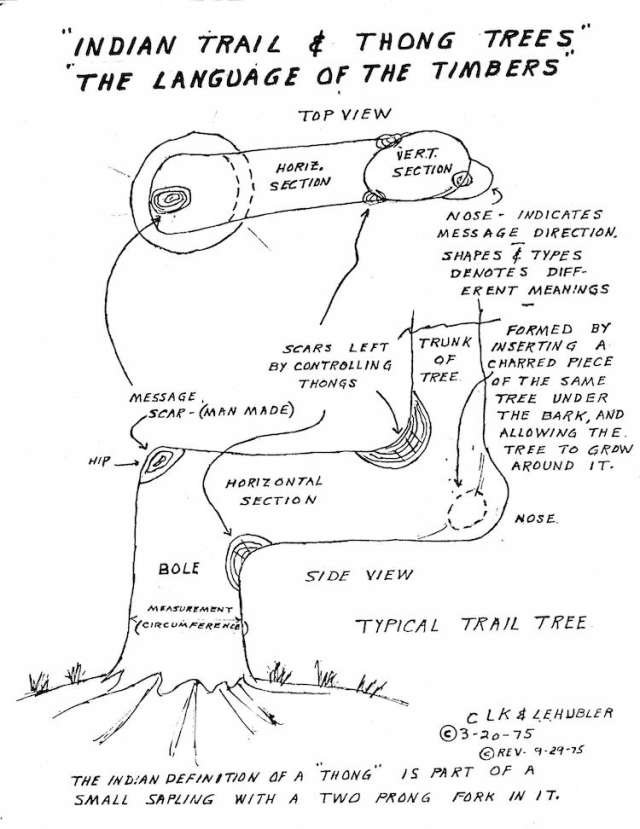Native Americans would bend trees in order to create trail markers that formed an early routing system, which served multiple purposes. From indicating that water and food was nearby, to warning travelers of rough country ahead, these landmarks were important features in navigating the early Americas.
At Florissant Fossil Beds National Monument in Colorado, for instance, you'll find lots of Ponderosa pine trees that were bent for this purpose:
The practice of bending trees to use as trail markers is by no means confined to Colorado. In fact, all across the country you can find bent trees that were used by Native American tribes to serve as permanent trail markers. Mountain Stewards have compiled a large database that includes over a thousand bent trees in 39 states. You can help out too! If you happen to run across a bent tree, snap a pic, note its location and shoot it over to Mountain Stewards.These trail trees point towards Pikes Peak, which the local Ute Indians believed to be a sacred site. But not every marker tree is so easily spotted. And in fact, looking for a strangely shaped tree isn't quite enough, since each tribe created slightly different markers. Because most people don't realize what these trees truly are, they are easily overlooked and can fall victim to development, disaster or disease with no one caring for them. Because trail trees are roughly 150 to 200 years old, many of them won't be with us for very much longer. We may still be able to see this original road map of our country, but the window to do so is closing. - American Forests
These trees represent an important part of Native American history and many groups are currently working to help protect them, such as the Dallas Historic Tree Coalition and the Great Lakes Trail Marker Tree Society.






When growing up in central Texas from multiple stories, I was told were that the large directed trees had meaning. They faced towards water and always did.(on the land we lived on) I was told that the Indians forced down young trees to point to water. I know of hanging trees that are along these path lines as well. This was always a funny part of history being Indian and German at the same time to me. Old trees have so much history. Its crazy that such beasts of beauty have to bear a horrible scar of humanity. Trees will always have my attention. No matter what is happening they stand as ageless truth.